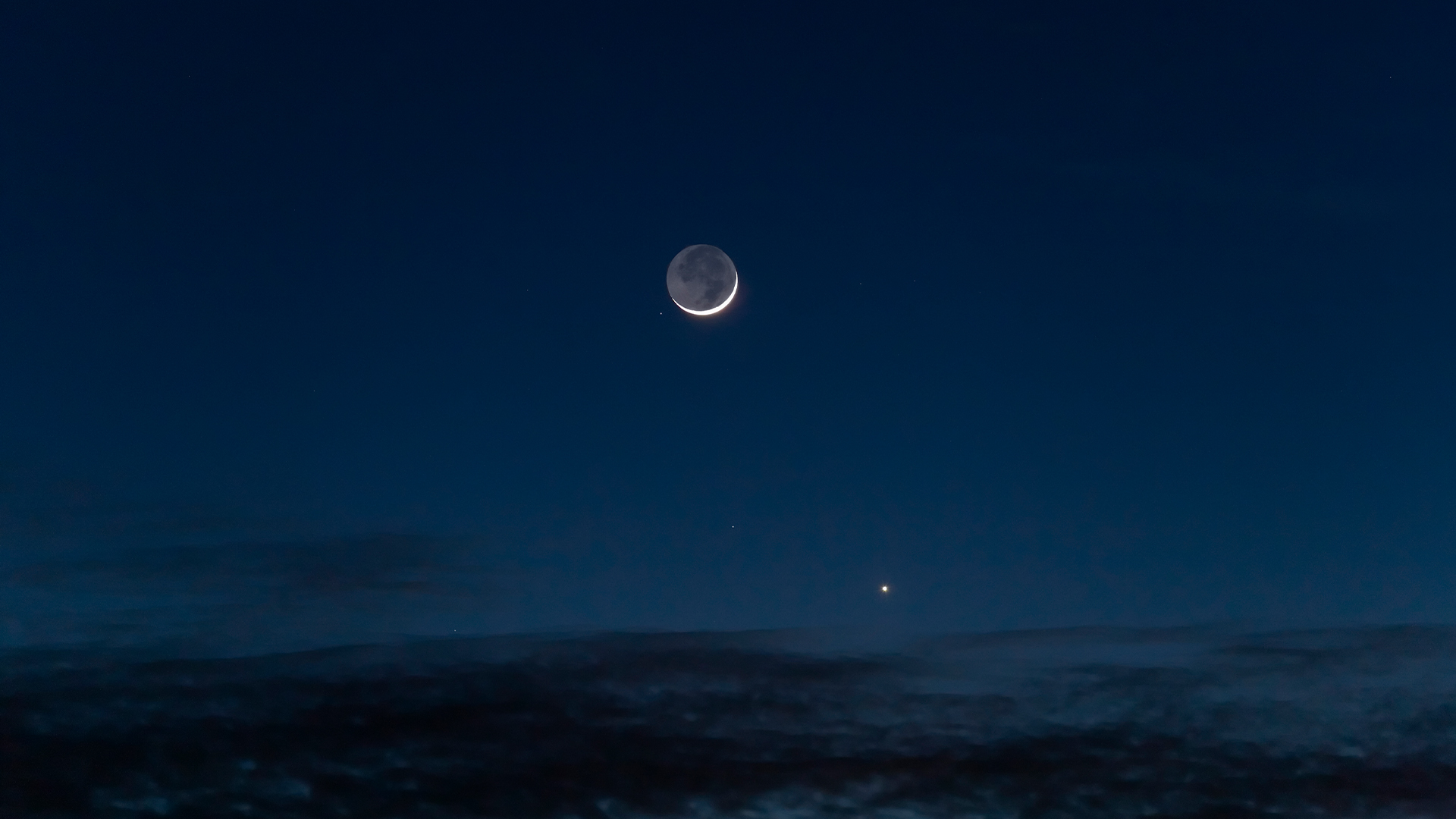How to see bright Venus dance with a glowing crescent moon this week
Early on Oct. 10, the bright planet Venus will appear exceptionally close to the crescent moon in a lovely skywatching display. Here's when and where to watch.

If you're willing to rise early, you may spot a beautiful sight in the eastern sky on Tuesday, Oct. 10.
About three hours before sunrise, the bright planet Venus and a 17%-lit crescent moon will appear just 5 degrees from each other, and the pair will be easily visible to the naked eye. Venus will rise about half an hour after the moon. You can get the exact rise times for your location on timeanddate.com's Night Sky Map & Planets Visible Tonight page.
It will also be possible to see a couple of bright stars around the crescent moon and Venus. The moon will hang in front of the constellation Leo, the lion. It will be between the two brightest stars in Leo: Algieba and Regulus.
Sometimes called the Lion's Heart, Regulus is the 21st-brightest star in the sky. Located about 79 light-years from the solar system, it's part of the sickle of Leo, the head and front of the lion, which resembles a backward question mark.
Related: Venus: Facts about the hellish planet next door
There are six stars in the sickle, with Regulus at the bottom. The fourth star, visible on the other side of the crescent moon, will be Algieba, which is about 130 light-years from the solar system and one of the clearest double stars in the night sky, according to Astronomy Now. Viewing Algieba through a good small telescope will split it into a pair of golden stars.
The crescent moon will move away from Venus and the bright stars as it continues its orbit, but equally beautiful sights await.
Get the world’s most fascinating discoveries delivered straight to your inbox.
On the mornings of Wednesday, Oct. 11 and Thursday, Oct. 12, it will be possible to glimpse the ever-slimmer crescent moon just 10% and 5% illuminated, respectively, as it approaches its new-moon phase, when it will eclipse the sun on Saturday, Oct. 14 as seen throughout the Americas.

Jamie Carter is a freelance journalist and regular Live Science contributor based in Cardiff, U.K. He is the author of A Stargazing Program For Beginners and lectures on astronomy and the natural world. Jamie regularly writes for Space.com, TechRadar.com, Forbes Science, BBC Wildlife magazine and Scientific American, and many others. He edits WhenIsTheNextEclipse.com.



